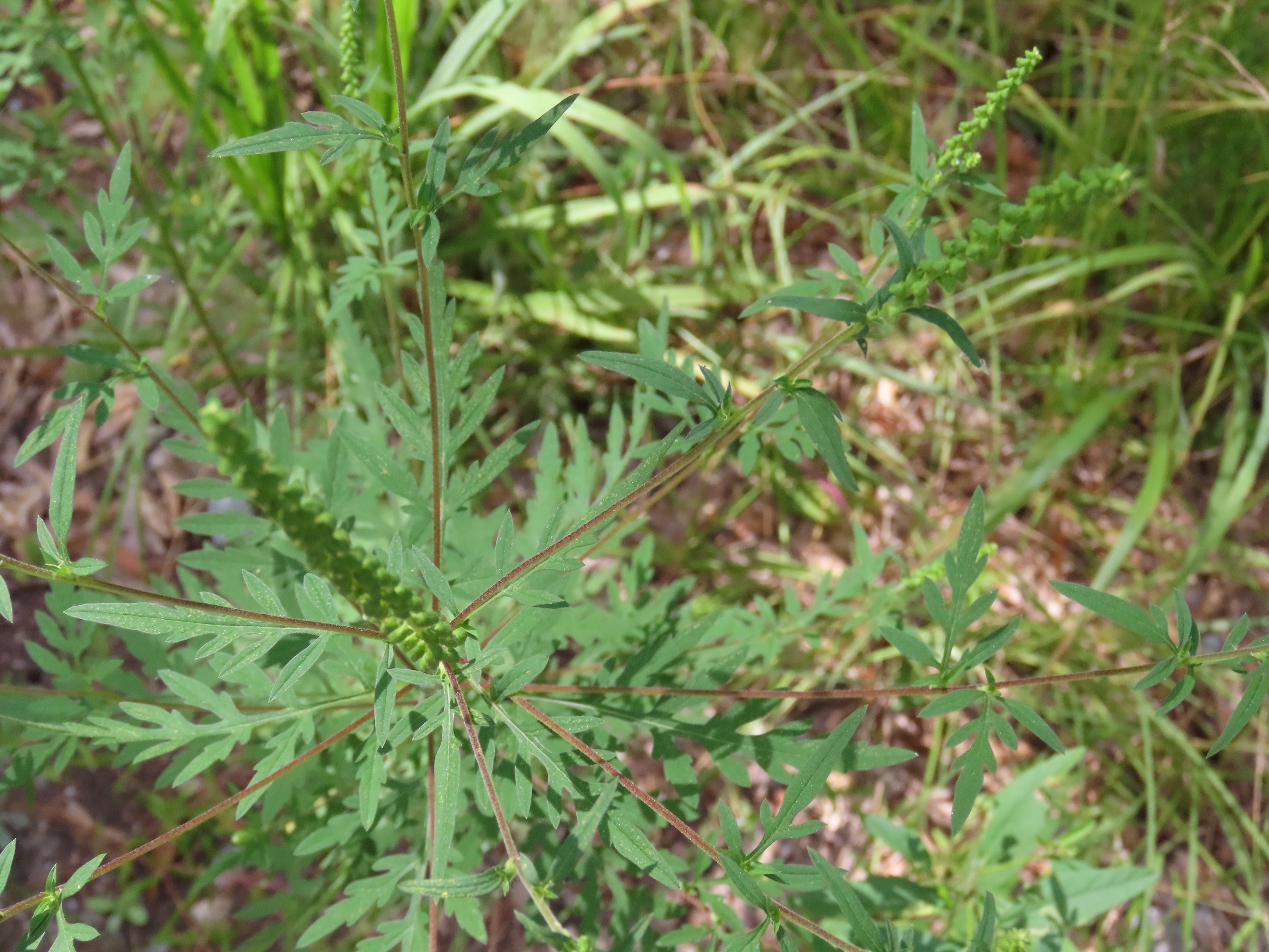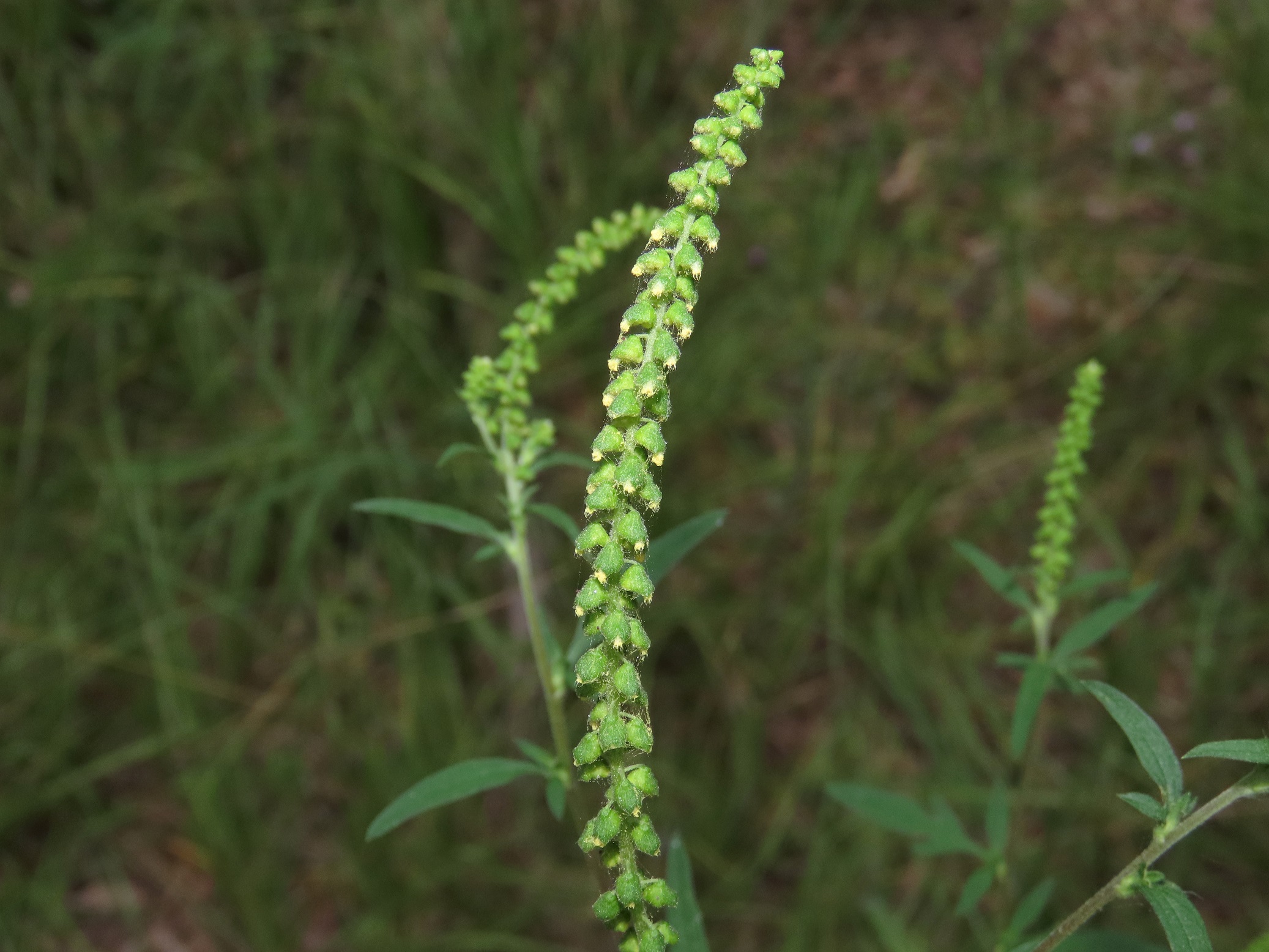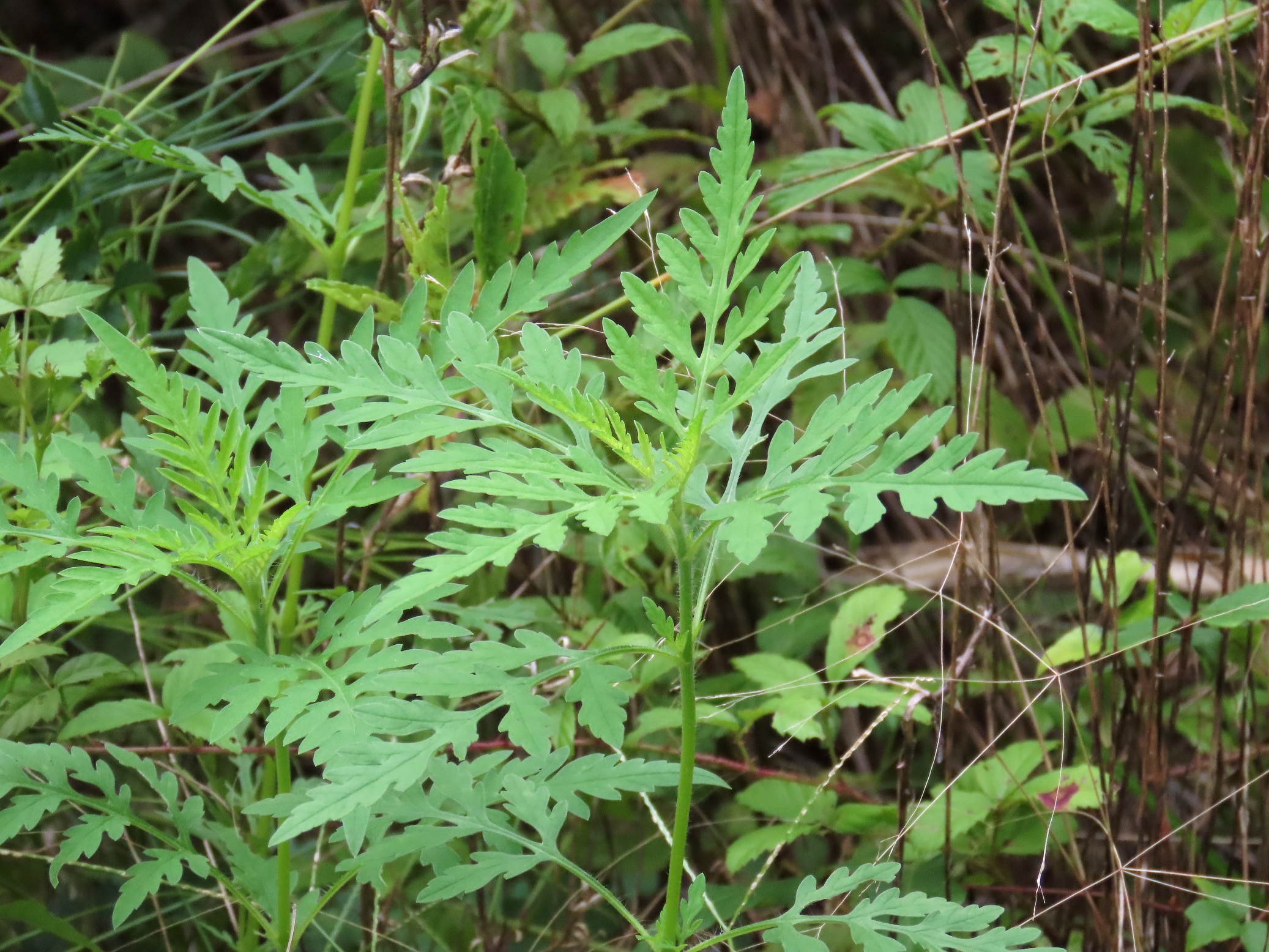




This week for Flora and Fauna Friday it’s the furtive forb, the secret sneeze-maker, Common Ragweed (Ambrosia artemisiifolia).
Common Ragweed is a prolific annual herb found across the Eastern United States and all of South Carolina. It’s an abundant component of prairies, savannas, meadows, fields, power-line clearings, roadsides, and practically all open and disturbed upland soils. In appearance, Ragweed is a leggy herbaceous plant, growing waist to chest-high as a norm with wide-held and sparsely foliated branches. It gets its common name of “Ragweed” from its oppositely arranged, ragged, finely divided leaves, which have something between a fern-like shape and the form of a wind-tattered flag. Ragweed is an incredibly inconspicuous plant, blending in seamlessly into the seas of green found in any vegetated clearing. It takes a trained eye to even know it’s there, but it almost always is!
The things Ragweed is best known for, infamous for even, are its flowers, more specifically its pollen. Common Ragweed is a wind pollinated plant. Rather than bribing bees to carry its pollen from one plant to the next, it uses the tried and true strategy of saturating the air waves in pollen granules. Common Ragweed flowers are a tiny green blob with a cream-yellow tip born on long slender spikes held aloft at the tips of its stems. These flowers sway in the subtlest breeze, shedding pollen while collecting it from off. Many clades of plants, like oaks, pines, hickories, and grasses, use wind pollination quite successfully. Yet a key difference with Ragweed is that its pollen is one of the most allergy-inducing of the botanical world and is the chief instigator of “Hay Fever” in the United States. One of the great shames of this infamy is it obfuscates the many wonderful wildlife benefits of Ragweed and the blame for seasonal allergies often gets unduly assigned to a different workhorse wildflower, Goldenrods.
As a quick aside, many Goldenrods, genus Solidago, grow in nearly identical habitats to Common Ragweed and their bloom period syncs up closely with Ragweed. Both are members of the Sunflower Family, Asteraceae, but Ragweed is the odd duck here being wind pollinated. Most of the Asterids are insect pollinated, this includes Goldenrods. Insect pollinated plants have showy, colorful flowers to advertise to insects and, as a consequence of their symbiosis with insects, don’t shed allergenic pollen. Their pollen is heavy, clumpy, and sticky so it can adhere only to the pollinating insects that visit their flowers. So a good rule of thumb is that, if a plant has big or colorful flowers, it doesn’t cause seasonal allergies. Ragweed, on the other hand, sheds pollen freely into the wind like smoke off a fire.
Ragweed, despite the respiratory aggravation, has many benefits in our Lowcountry ecosystems. Common Ragweed foliage is one of the most nutritious and protein rich forages around for Deer, Rabbits and other herbivorous wildlife. Ragweed is especially good at growing quickly on disturbed and nutrient poor soils, providing much needed food and overhead shelter to turkey, quail, sparrows, deer, mice, and other wildlife all while cycling nutrients up from the soil to make them available in damaged environments. The seeds of Common Ragweed, although small, are an incredibly sought after winter food source for sparrows, quail, and other prairie bird species. It’s even known that Native Americans once cultivated a different Ragweed species, Giant Ragweed (A. trifida) which is found in the SC upstate, as an oil and protein rich food grain before fully transitioning to corn as a stable grain crop.